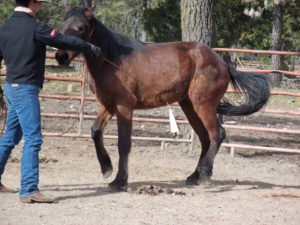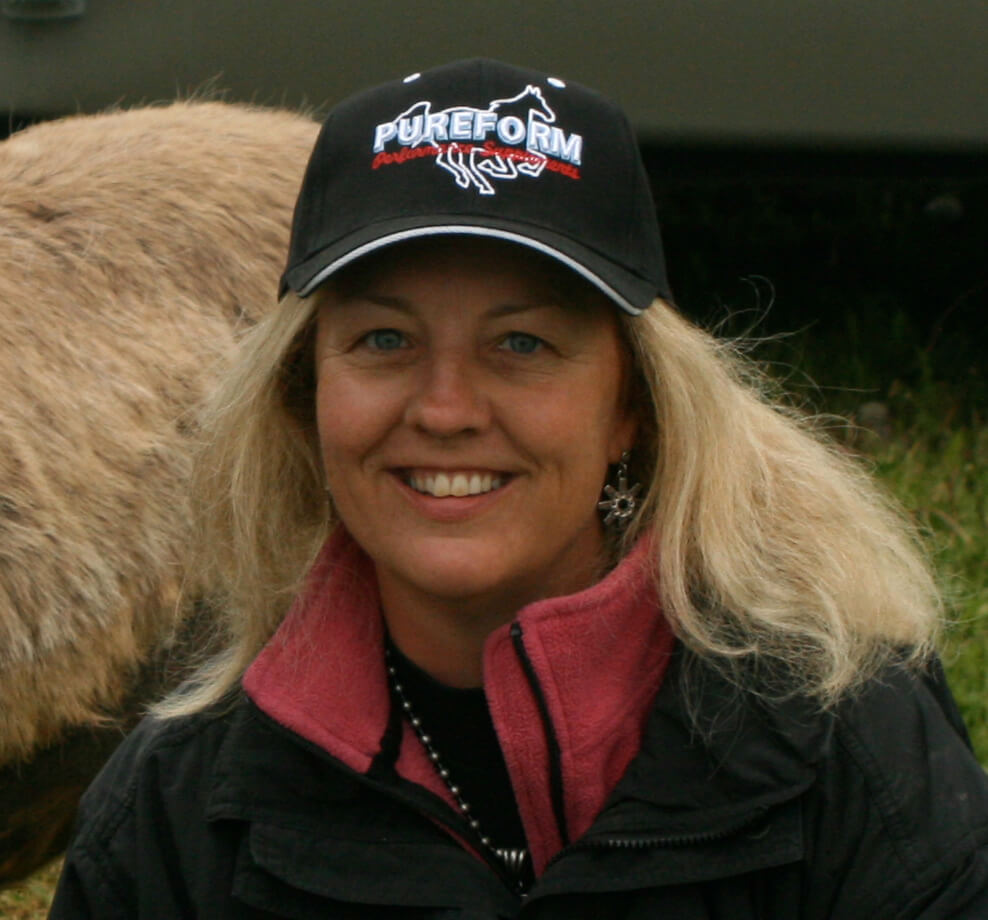by Brent Rollins

Now that you can lead and touch your mustang, it is time for groundwork. With groundwork you will be addressing all areas of desensitizing. Flagging is an excellent desensitizing method that uses a small flag attached to a training stick or whip. When flagging, don’t put the flag up in your horse’s face; hold it out and away and let him touch it. Using a flag is not merely “flapping” it around. Always hold the flag over your shoulder when you are not using it on your horse. Don’t drag it along the ground or hold it like a lounge whip—that is not what it’s for. Introduce it by holding your horse at a slight distance and flapping the flag to your side, not right in your horse’s face. This is good practice when you are desensitizing with the flag, or anything else for that matter. If your horse becomes upset or bothered, keep in mind that this is not the time to stop. You must keep it up until your horse tries to face his fear and at least stops moving. If you don’t, you are teaching your horse to spook. Only reassure and praise when he gives you the correct response. The response you are looking for is the horse standing still and accepting it. The end goal of flagging is to “paint” your entire horse with the flag.
The next thing on your “to do” list is hobbling. First and foremost, hobbling teaches your horse to stand still. If a horse trained to hobble ever finds himself in a situation where his legs are stuck he will stand and wait rather than panic. There are many types of hobbles and included are soft training, leather strap and rawhide twist hobbles. For the first time I would suggest cotton or soft hobbles, such as a pair of Craig Cameron training hobbles. Once your mustang has learned to hobble well, you can use whatever style of hobble you like.

When putting on the hobbles stay to the side of your horse, not right in front. The first time your horse is hobbled his legs are tied together and he doesn’t know it. Show him by taking the lead rope and pulling on the halter to get him to take a step forward. He will trip; stay calm and simply tell him “whoa!” Keep asking him to come forward and “feel” the hobbles, and every time tell him to whoa. When you pull on him and he won’t come forward that’s the response you are looking for; praise him for a job well done. Now, drop your lead rope and walk around your mustang. Pat him all over, pull his tail and check for spooky sensitive spots while he is hobbled. If you find any you will know you have more desensitizing to do. If your horse is extra sensitive it is acceptable to hobble your horse and then flag to help him arrive at the correct response.
Now that you can hobble and flag comfortably, and your mustang is calm, you need to use your imagination and introduce him to as many items and things as possible. These are just a few ideas that have worked for me: feed sacks, swim noodles, cones, jackets, chaps, slickers and tarps. The possibilities are really endless. Have fun and enjoy spending the time with your horse. Make sure you introduce him to situations you hope will never happen so that if they do one day, it will be no big deal.
Published March 2014 Issue

Owner/Publisher Karen’s lifelong love of horses began at a very early age when she wore out a couple of rocking horses before convincing her parents to get her the real thing. That ill-tempered bay gelding, Brandy, was a challenge for the young horsewoman, but it drove her ambition to become a horse trainer. After attending Canyonview Equestrian College’s Horsemanship Program, Karen realized she needed work that was a little more lucrative than training, so she took a job with Customs Brokerage to pay the bills. There, she discovered an affinity for computers and a talent for creating informative, entertaining newsletters. The Northwest Horse Source began as such a letter in December 1995, with a distribution of 1000 copies for its 12 black and white pages. Now 29 years later, it’s an online magazine and website with a reach of over 10,000 per month and growing! Not bad for the results of one woman’s dream to work with horses!
Today, Karen remains involved with every aspect of the magazine and treasures the community of thousands who share a common passion.






